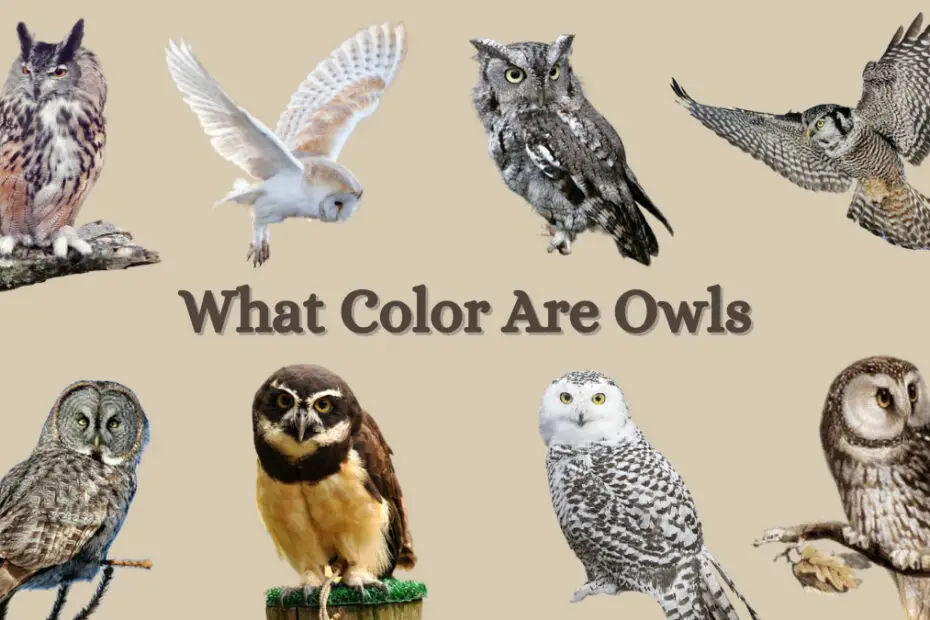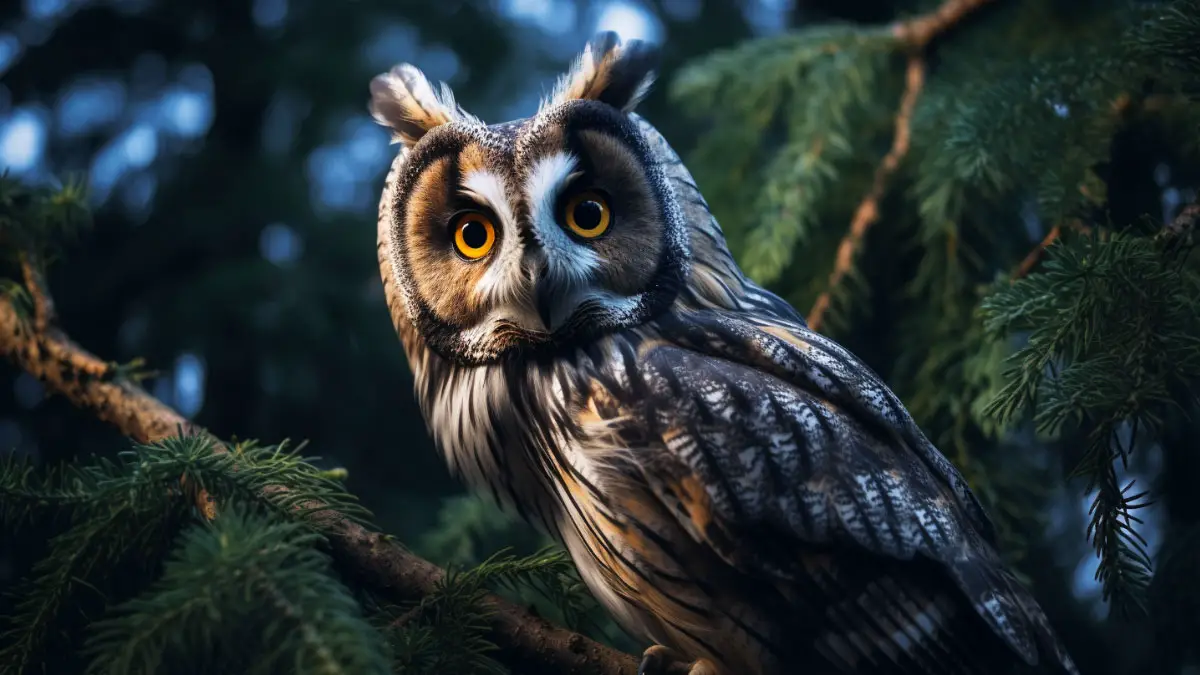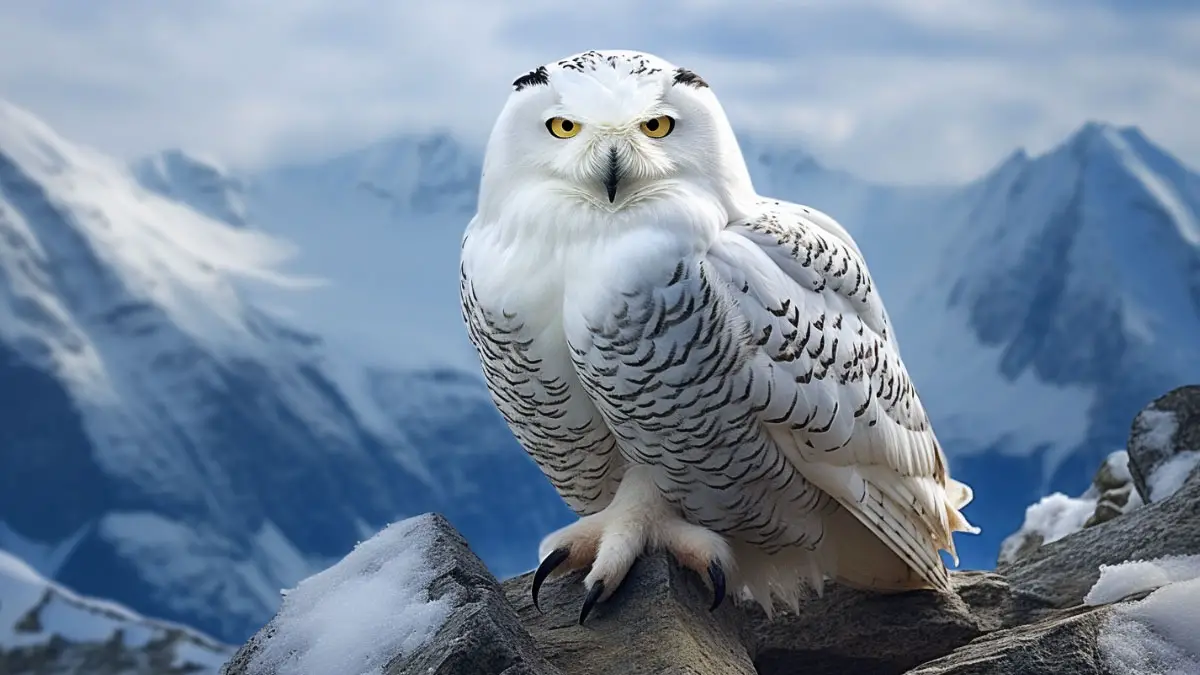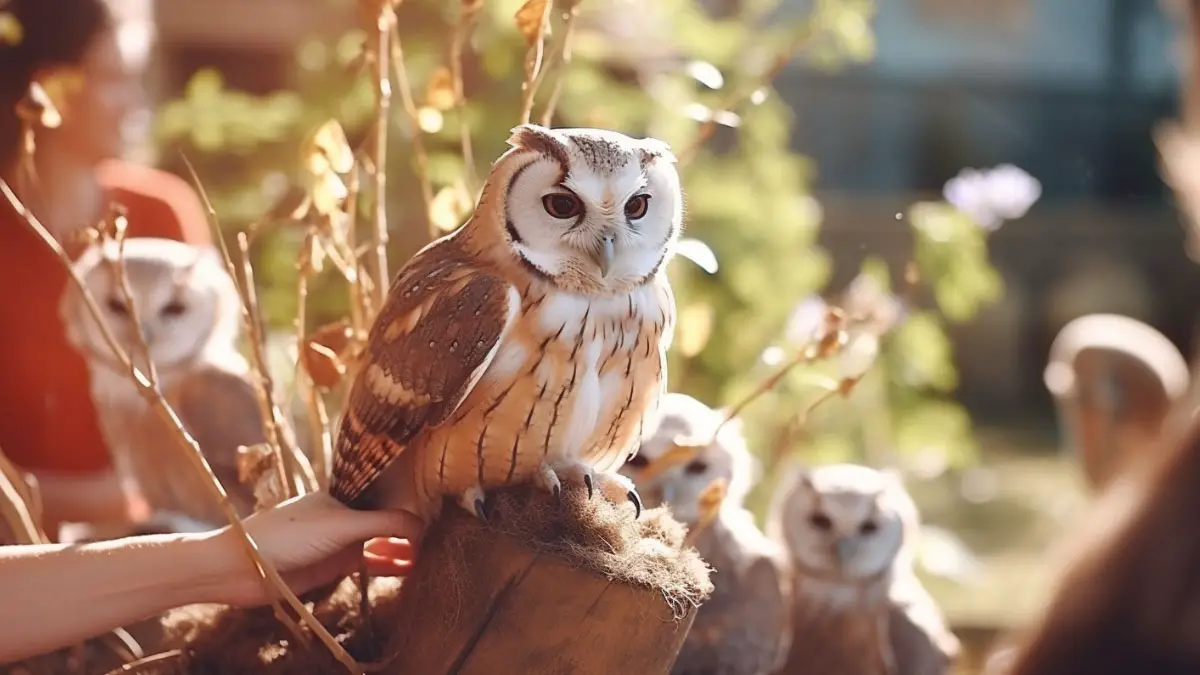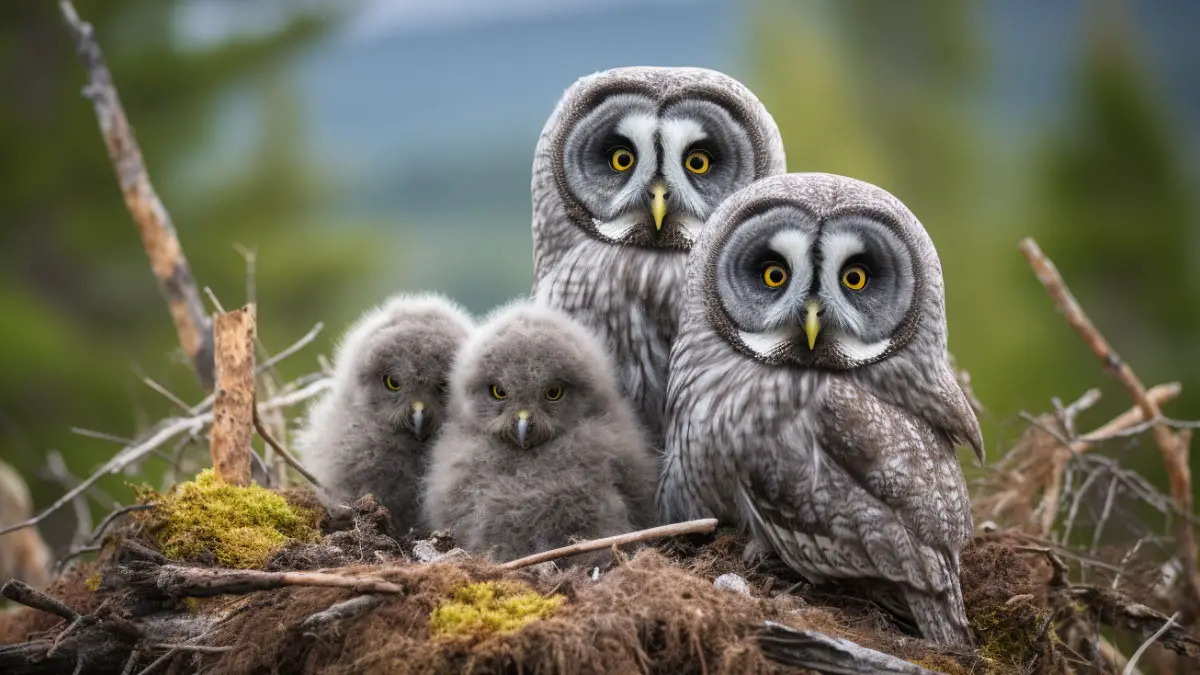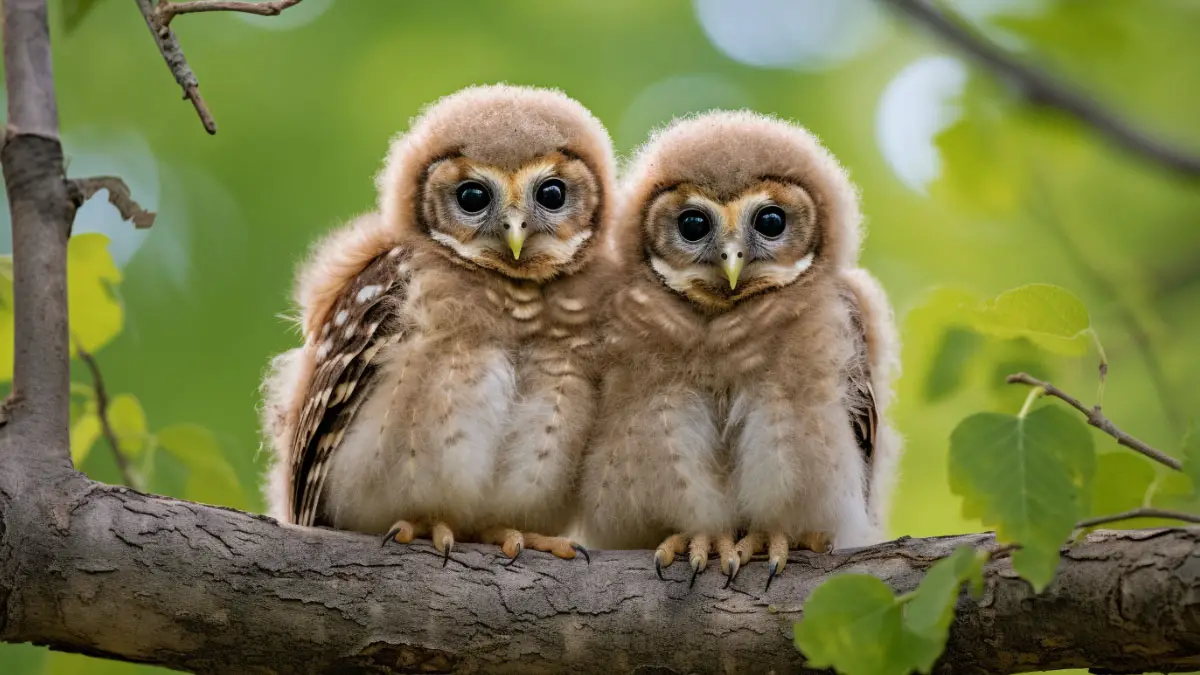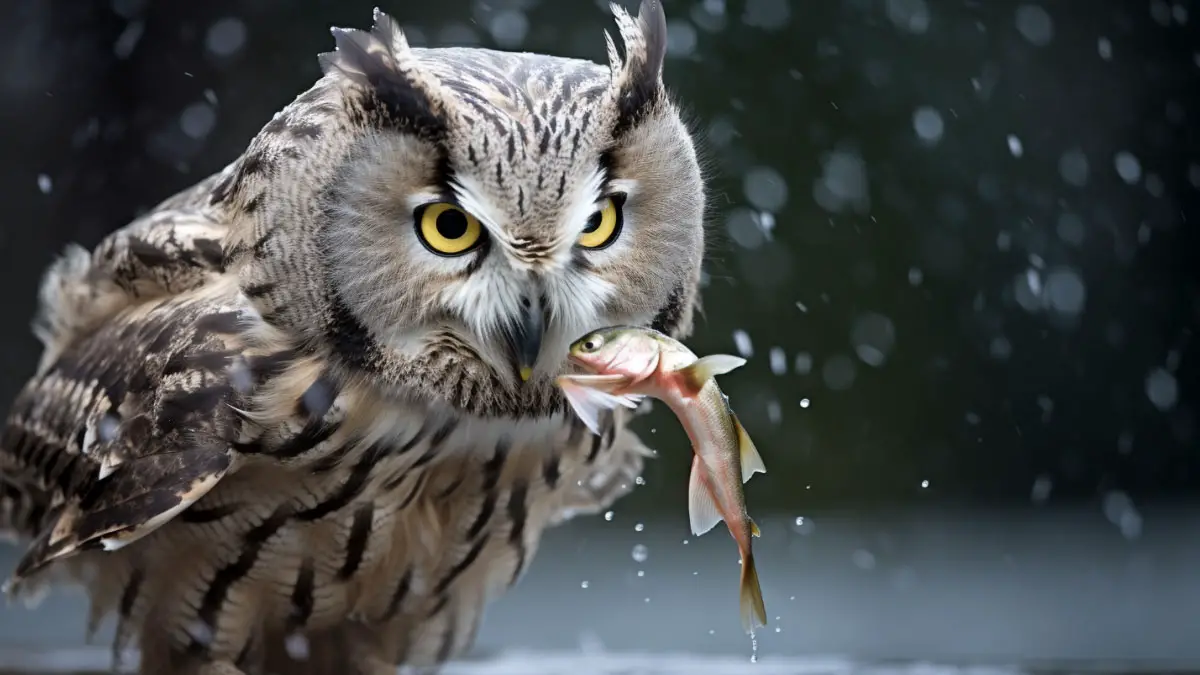Owls are easily indicated by their huge, spherical heads and large, forward-facing eyes. Female owls tend to be larger than male owls. But when it comes to their appearance, what color are owls?
Owls come in different shades of color, including black, gray, white, brown, or rufous (reddish) to deep brown. Many of them come with patterns, including streaks, bars, or spots. However, there are owl species, like small screech owls, who have a concealing appearance.
Exploring more about the owl’s appearance is an intriguing idea. So, let’s go ahead and find out all about these creatures!
What Color Are Owls? The Most Common Colors
The unique hues of an owl’s feathers are the result of two types of biological pigments- melanins and eumelanins. There are 5 color variations most commonly found in owls.
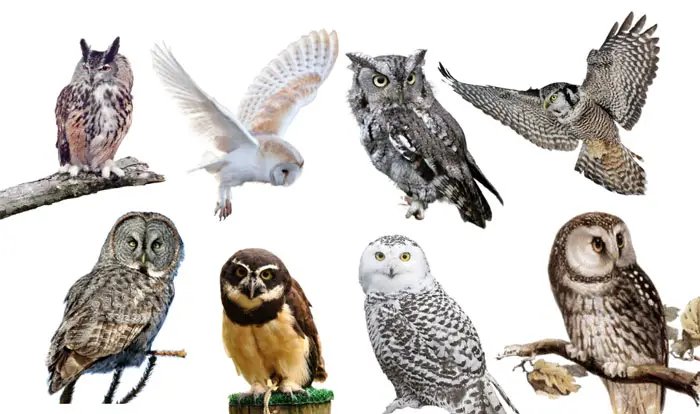
White
White, a universal hue present in many animals and birds, is particularly conspicuous and unique in specific owl breeds. The Snowy Owl is the most well-known white owl, with males having a pure white appearance and females having dark brown streaks on their otherwise white feathers.
The Snowy Owl’s white plumage serves as great camouflage in snowy conditions, helping the bird to disappear into its surroundings. Some owls, like the Great Horned Owl, may be affected by albinism, which causes them to have white feathers and pink eyes.

Gray
Many species of owls are a shade of gray that is a combination of black and white. The Great Gray Owl has a thick covering of gray feathers that are decorated with a brown pattern. They are a perfect color match for the snowy, forested environments.
This species’s mastery of its ecology, along with the camouflage of the gray coloring, makes it a formidable and uniquely adapted predator.
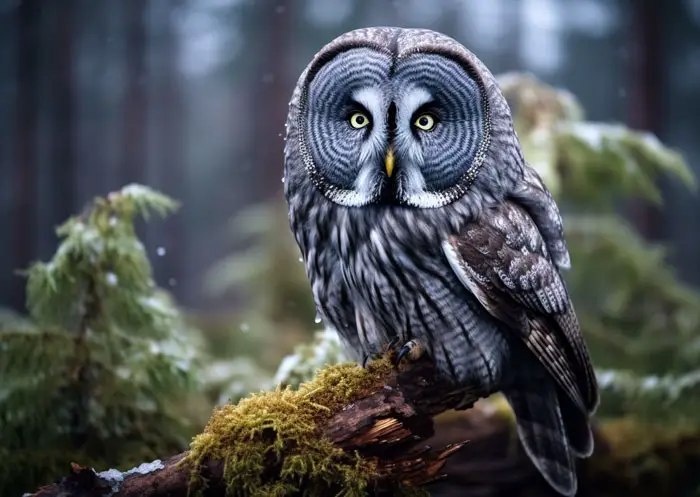
Tan
Tan is another common color that helps in camouflage inside woodlands and open places. Tawny owls with brown plumage undergo a greater molt of flight feathers compared to their gray counterparts. This light brown tint helps owls blend into tree branches and trunks.
The Barn Owl’s feathers are a combination of tan, brown, and white, and they can be found all over the world (except in deserts and the polar regions, of course).

Tan owls can sneak up on their prey undetected because of the special way their feathers are constructed in flight. Their tan pigmentation and adaptability make them more successful nighttime hunters in many ecosystems.
Brown
The brown color is very common among birds and owls. Therefore, it works well as a camouflage color for owls in a variety of environments, including deserts, woods, mountains, and plains. The color brown helps absorb sunlight, which allows owls to control their body temperature in colder environments.
Tawny owls, native to the forests of Eurasia, pass on their distinctive brown plumage to their offspring. The next generation of Tawny Owls is inheriting a browner coloration from its parents, which scientists blame on climate change.
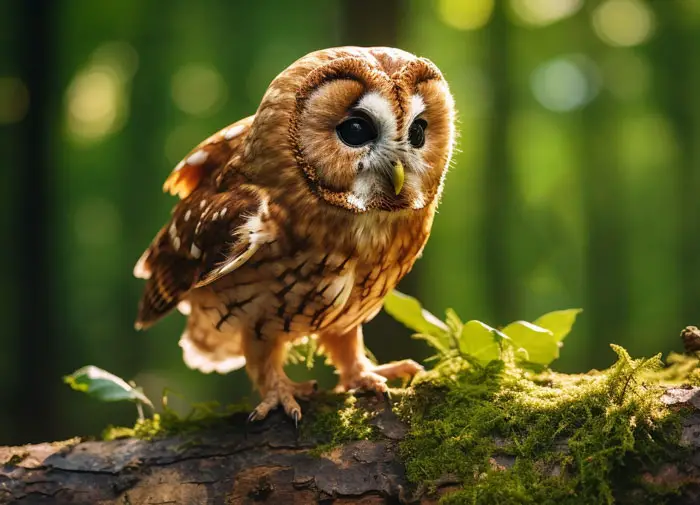
Rufous
Some owls have a distinctive reddish-brown coloring that sets them apart from other species. This one-of-a-kind coloration aids the owls’ camouflage in their natural habitat, which may contain a variety of browns, reds, and greens in the woods.
Some screech owl species also possess rufous hues, making them identifiable due to their spot pattern. Research found that about 41% of Eastern Screech Owls are rufous.
Colors of Different Species of Owls
Owls’ color varies depending on their species. They typically appear in shades of brown. In addition to the typical brown, owls can also be seen in a variety of other hues.
Barn Owl (Tyto alba)
Barn owls can be identified by their relatively pale coloring and distinctive heart-shaped facial disc. The female barn owls have comparatively darker brown features than males.
The upperparts are a mix of buff and grayish-white, while the underparts are normally white. You can identify them by their distinctive shrieking sound and their long, narrow wings.
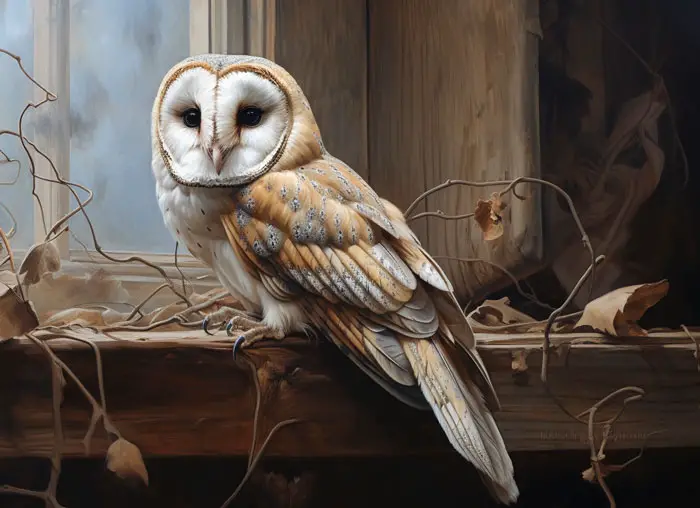
Great Horned Owl (Bubo virginianus)
This species has large color variations, from rusty brown to black and white. However, they usually have a paler underside and a speckled brownish-gray upper body. They have a white collar of feathers where their neck joins their stomach.
Humidity and other environmental conditions influence the wide range of coloration found within this species. Great horned owls tend to be darker in color, closer to the Arctic, while they lighten up in the southern states. This versatility in shade allows them to blend into many environmental settings.

Snowy Owl (Bubo scandiacus)
Most of a snowy owl’s body will be white, with varying degrees of black and brown patterns. Some individuals have very few or no visible markings at all, while others have a “salt and pepper” pattern in which black and brown feathers are interspersed.
Females exhibit this variance more frequently than males do since men typically lighten in color with age. In the Arctic, where they spend most of their lives, snowy owls blend in well with the snowy landscape- thanks to their white coloring. This adaptation helps them conceal themselves from both prey and predators.
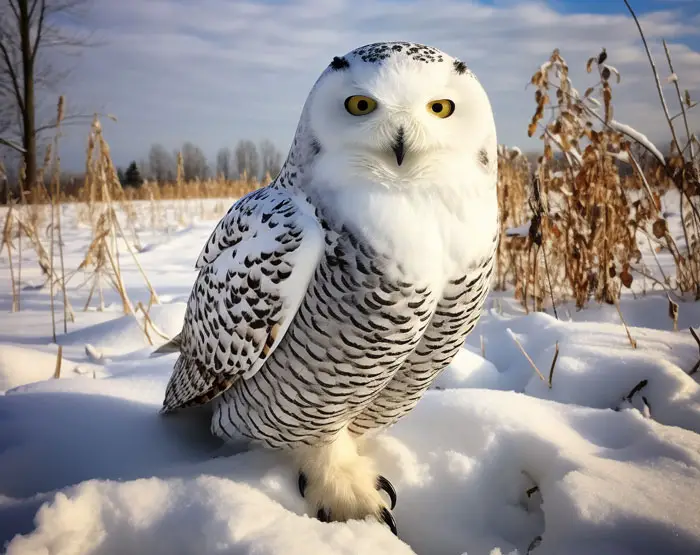
Eastern Screech Owl (Megascops asio)
The Eastern Screech Owl occurs in two color morphs: gray and red. The more frequent gray morph features a camouflaging combination of gray and brown feathers. Their feathers are intricately patterned with a wide variety of colors.
The owl’s elaborate coloring has a precise function, notably helping it to blend in with tree bark. This intricate blend of blacks, whites, and reds in their plumage allows eastern screech owls to mimic the patterns and colors of the tree bark.
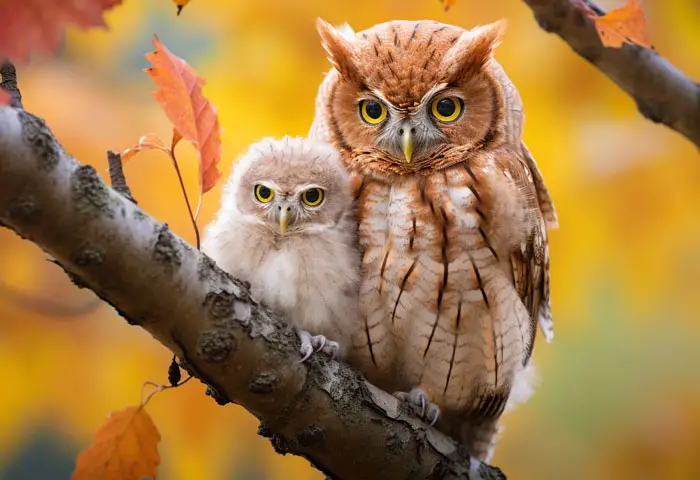
Barred Owl (Strix varia)
The eyes of a Barred Owl are dark brown and black, while the rest of its body is a mottled brown and white. They have brown bars going vertically across their white bellies and horizontally across their upper stomachs and breasts.
These beautiful colors and patterning have a practical purpose as well. The barred owl can successfully hunt because of its ability to blend in with its environment and avoid discovery by prospective predators.

What Is The Rare Color Of Owl?
While there may be commonly seen colors in different owl species, some owls come with distinctive colors that set them apart from usual. The following are some rare colors that aren’t typically seen in owls.
Black
A Melanistic Barn Owl is so rare that you can only find 1 in every 100,000 birds. The abundance of dark pigmentation in the plumage of melanistic owls gives them their distinctive all-black appearance. This coloring is unusual and sometimes results from genetic mutations.
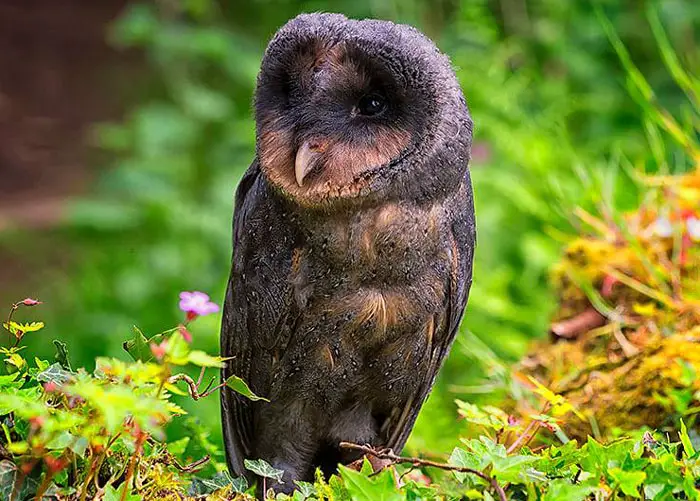
Full White
White owls are likely leucistic, which occurs due to leucism (a condition resulting in partial loss of pigmentation). This is seen in the white coat and dark eyes of the leucistic screech owl.
Leucistic owls can have white or light plumage with black eyes. These owls aren’t truly albinos, but they have no pigmentation at all. The presence of leucism in screech owls, like the Eastern Screech Owl, is quite unusual.
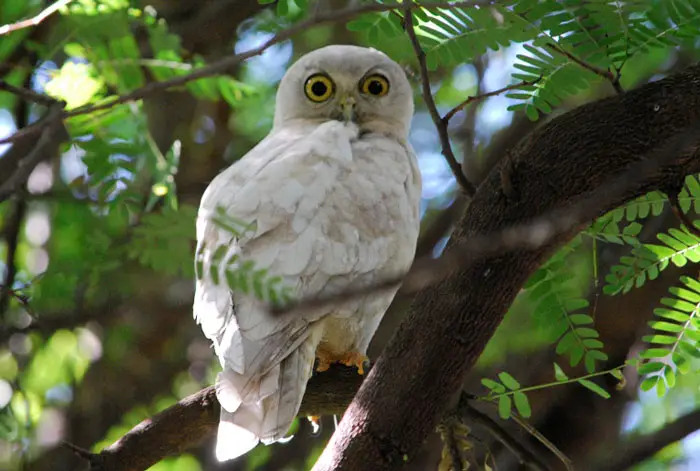
Warm Brown
This unusual and striking coloring can be seen in Cinnamon Screech Owls, a subspecies of the more common Eastern Screech Owl.
The cinnamon hue of the feathers makes it stand out from the more prevalent gray and rufous colors. You will find these owls mainly in Colombia and Peru.
Silver Or Grayish Blue
Some owls have a remarkable silver or grayish-blue appearance, and these specimens are referred to as the silver morph. Silver Morph Eastern Screech Owls have this kind of coloration.
Eastern Screech Owls sometimes have a less common variation of coloration. In contrast to the more common gray and red variants, the silver morph has stunning plumage. Eastern Screech Owl is found across North America, from Canada to Mexico, and it includes the silver morph.
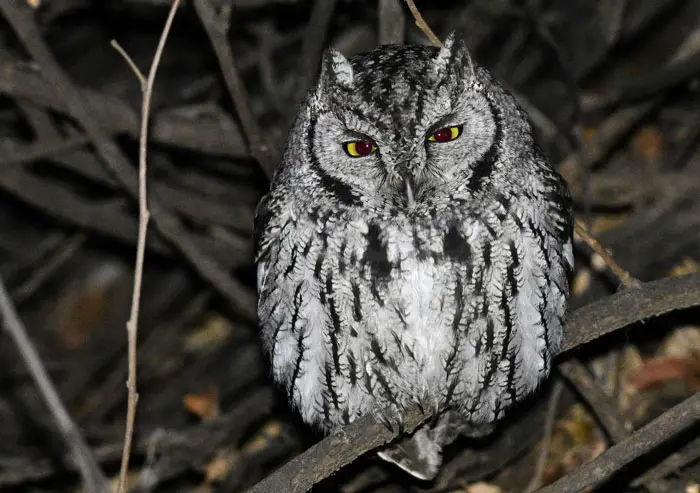
What Color Are Owls’ Eyes?
Alongside their body color, owls’ eyes have a lot of variations in colors, too. Typically, nocturnal owls have darker eyes than others.
Yellow And Orange
Most nocturnal owl species, like the Barn Owl and the Great Horned Owl, have yellow and orange eyes. The brightness of these colors can vary, but they are typically modified such that they are easier to see in dim conditions.
Owls with orange eyes are crepuscular and active during low-light periods such as dusk and dawn, while yellow-eyed owls are diurnal, preferring to hunt during the daytime.
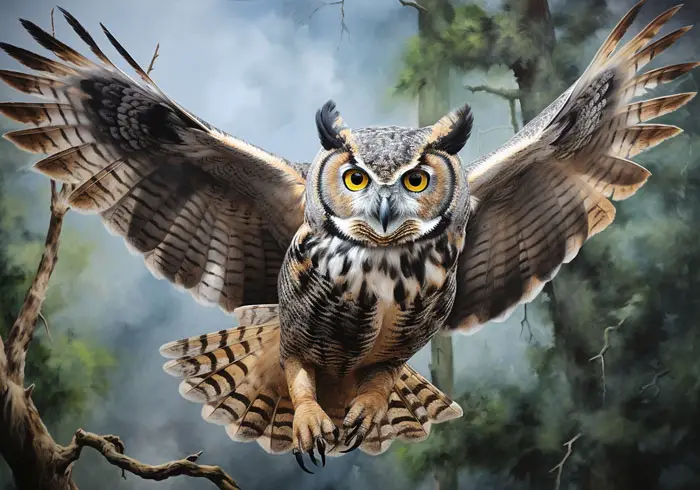
Dark Eyes
Some owls, like the Long-eared Owl and the Barred Owl, have dark and black eyes. The specialized hunting methods and surroundings in which these animals thrive may contribute to their deeper eye hues. Dark eye color is an evolutionary trait that aids in camouflage during nighttime activities.
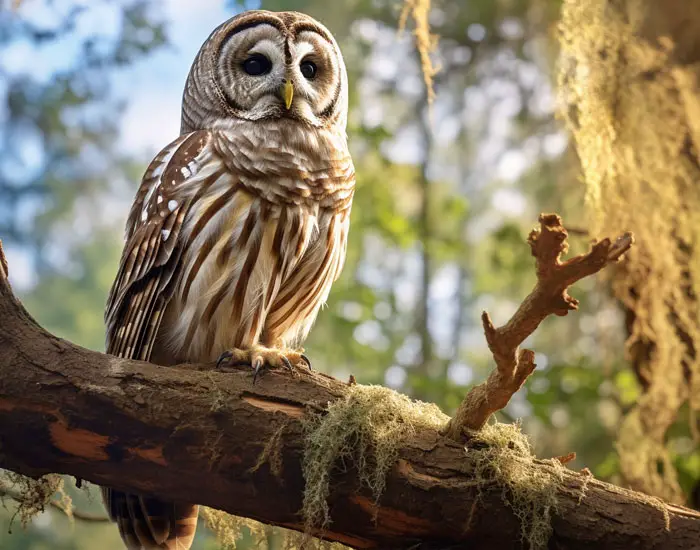
Silver Or Gray Eyes
The Northern Hawk Owl is one owl species that has silver or gray eyes. This coloring has a role in how they appear generally. Its silver or gray eyes are perfectly adapted to the bright light of day, helping it to hunt efficiently during the day.
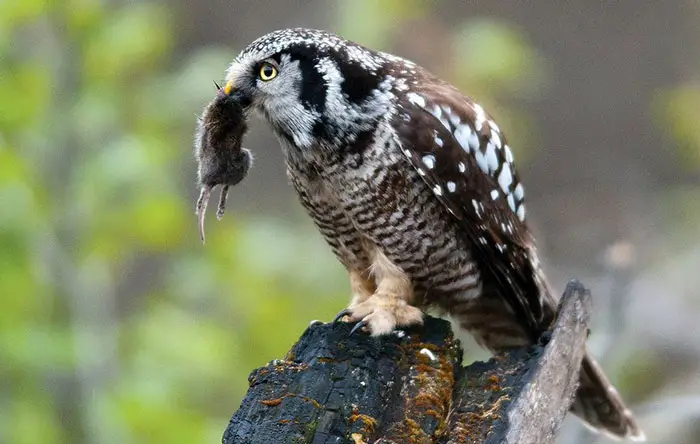
Wrapping Up
While you may have seen brown or a combination of gray and white color in owls, there are many other variations in their colors, as you have seen above. So, as you know what color owls are, it will give you additional ideas about the reasons behind their color versatility.
